India is a land of ancient civilizations. The Indus Valley Civilization flourished here from 2,500 to 1,900 BCE. During the early 2nd millennium BCE, the Indo-Aryan tribes migrated to India. The Vedas – the oldest scriptures of Hinduism were composed during the Vedic Period from 1500 to 500 BCE.
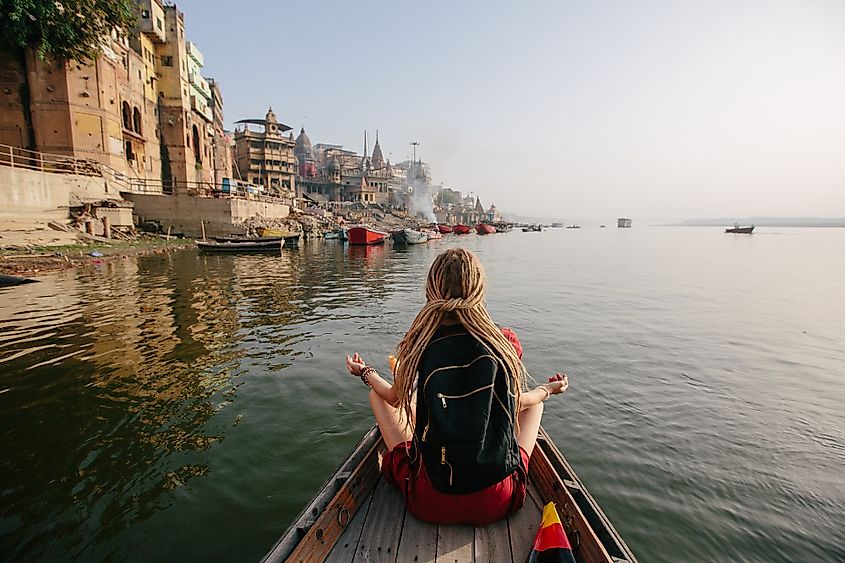
India also hosts some of the most ancient urban centers that are currently termed ‘cities’. These ancient Indian cities were considered to be one of the world’s most prosperous cities during that time. These ancient urban settlements also served as centers for learning, culture, arts, etc., for thousands of years. Located on the left banks of the holy Ganges River, in the southeastern part of the north Indian State of Uttar Pradesh is Varanasi (also, Benares/ Kashi) – one of the oldest cities in India and also one of the oldest continuously inhabited cities in the world.
Contents:
- Geography
- Brief History
- Major Attractions
Geography
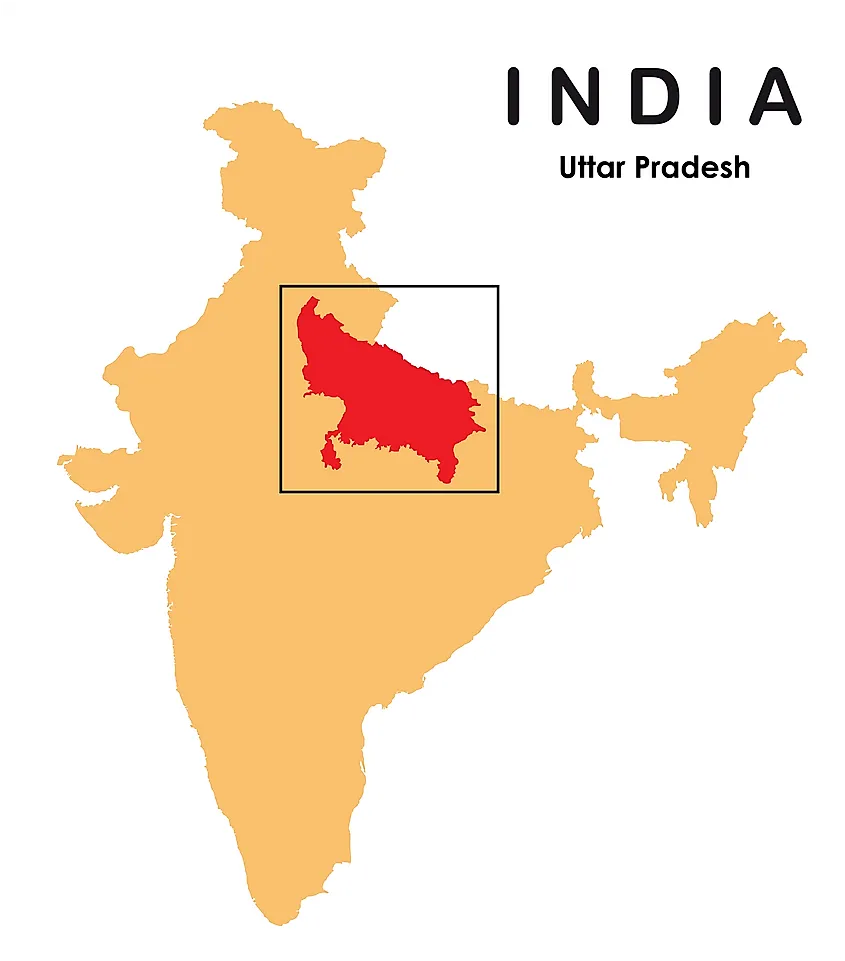
The city of Varanasi is located in the heart of North India’s Ganges Valley about 797km southeast of the country’s capital New Delhi; 121km east of the city of Allahabad/Prayagraj; 320km southeast of the state capital city of Lucknow and 63km south of the city of Jaunpur. The city is positioned between two small streams that flow into the river Ganges. The Varana/Varuna flows in the northern part of the city, while the Assi flows in the southern part of the city, giving the city its name ‘Varanasi’.
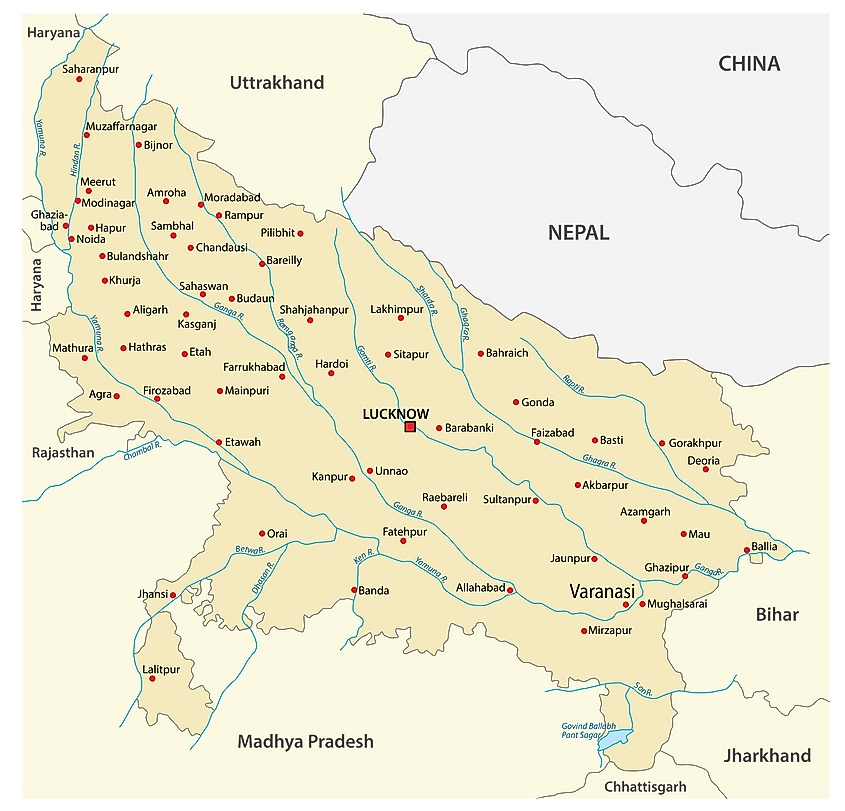
In Varanasi, the course of the River Ganges towards the Bay of Bengal suddenly turns to the north. Throughout its course from the Himalayas to the Bay of Bengal, it is only in Varanasi that the River Ganga flows in a crescent shape from south to north. Symbolically, this flow of the river from south to north thus refers to the flow of the life cycle from the realm of death to the realm of life. This unique change of direction in the river’s course eventually led to the development of this ancient city on the west banks of the holy Ganges River.
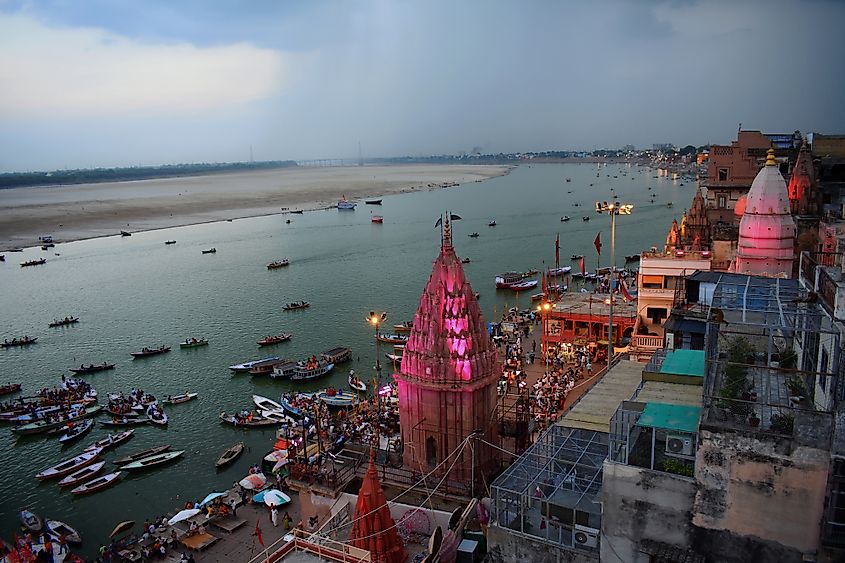
According to the Köppen climate classification, the city experiences a ‘humid subtropical climate’. The average temperature during the dry, hot summer months ranges between 22 to 46°C. Winters are comparatively much cooler. The monsoon season is from July to October and the city receives an average annual rainfall of 1,110mm.
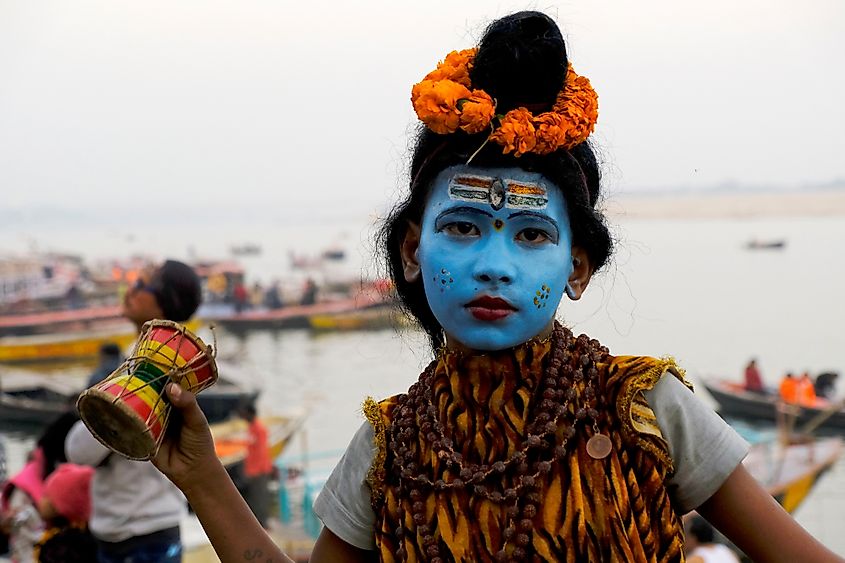
Hailed as the city of Lord Shiva, Varanasi is considered to be the holiest among all the seven holiest cities of Hinduism and attracts numerous pilgrims from across the country every year. Thousands of international tourists also visit this ancient city every year to experience its culture, history, architecture, to seek solace, and to discover the true meaning of life. Hindus believe that those who die and are cremated here, receive an instant gateway to ‘moksha’ from the cycle of birth and rebirths.
The ancient Hindu text of Rigveda refers to the city of Varanasi by the name of ‘Kashi’. The word ‘Kashi’ has been derived from the Sanskrit word ‘kaś’ which means “to shine”. Hence, the city is also popularly known as the “City of Light”. During British rule, the name of the city was anglicized as ‘Benares’.
Brief History
According to Hindu Mythology, the city of Varanasi was founded by Lord Shiva. As the legend goes, Shiva fought with Brahma – another principal Hindu deity and severed one of Brahma’s five heads. Hanging the severed head of Brahma, Shiva carried it and dropped the head at Varanasi. Therefore, Hindus believe that with the touch of both Shiva and Brahma, Varanasi became a holy site. It is also believed that the Pandavas also visited this holy city in search of Shiva and to atone for the sin they had committed during the famed Kurukshetra war.
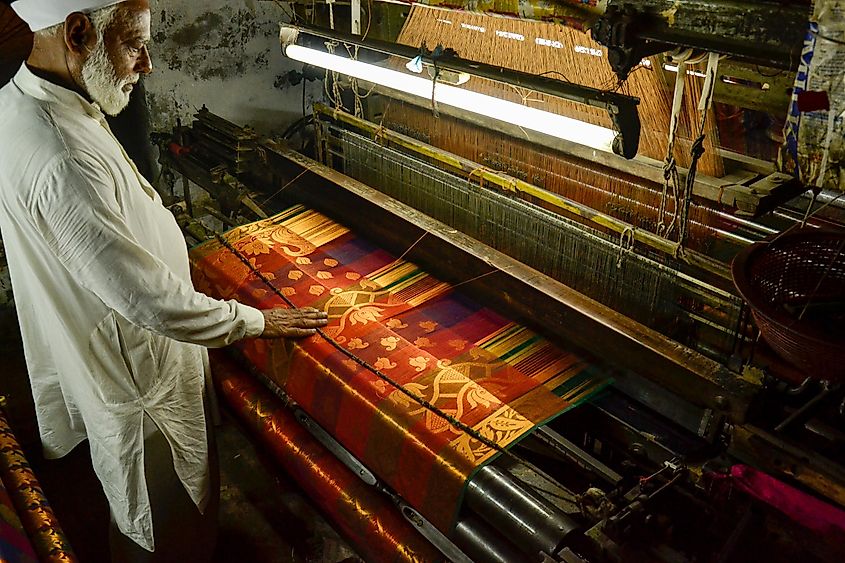
The ancient city of Varanasi was located on the northern side of the present city in an area known as Rajghat, where archaeological excavations have revealed the remnants of a city wall, and artifacts dating as far as 800BCE. Varanasi eventually started to develop as a major industrial center and was widely known for its sculptures, perfumes, muslin, and other silk fabrics and ivory works. Varanasi formed a part of the Kingdom of Kashi during the time of Gautama Buddha. It is believed that Buddha had found Buddhism here in 528 BCE and gave his first sermon at Sarnath, which is situated about 10km to the northeast of the city of Varanasi.
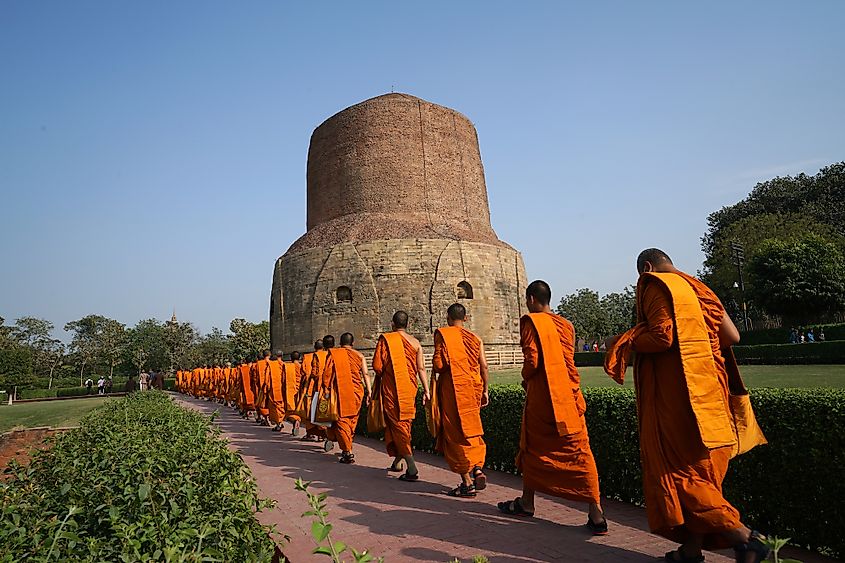
The famous Chinese traveler – Xuanzang, visited Varanasi in 635BCE and described that the place served as an important center for artistic and religious activities. Due to the large number of temples in the city, Xuanzang named it “Polonise”. Varanasi was ruled by many Indian dynasties over the years. For several centuries, the city has served as the home of numerous renowned saints, philosophers, writers, artists, and musicians. The Father of Traditional Indian Medicine – Dhanvantari served as one of the earliest kings of this great city. The ancient Indian philosopher Adi Shankaracharya established the worship of Shiva in Varanasi in the 8th century and the city started growing as a site of pilgrimage and by the 12th century, the city became the most revered holy center for the Hindus. The Jain literature refers to the city of Banaras as a “Jain Tirtha” as two Jain Tirthankaras were born and raised here. The founder of Sikhism – Guru Nanak also visited Varanasi during the festival of Maha Shivaratri in 1507.
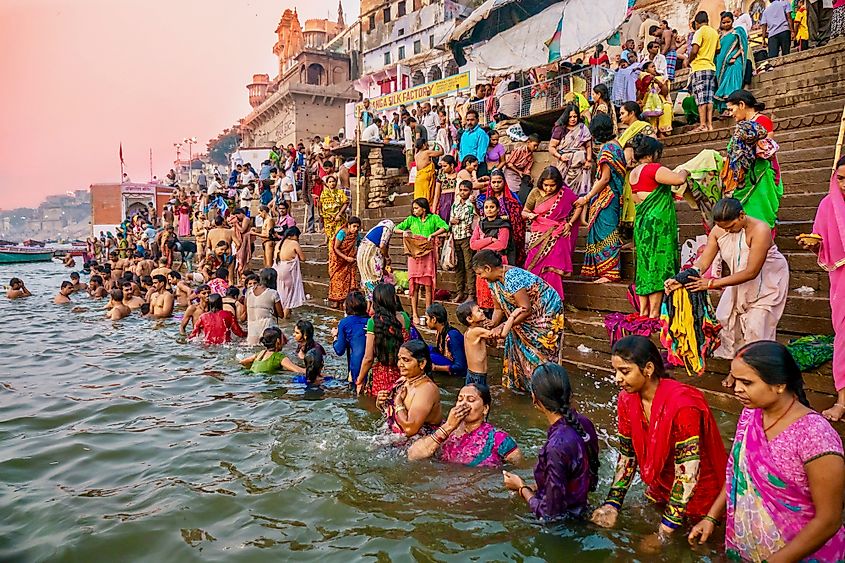
In the 16th century, Varanasi underwent a ‘Hindu cultural revival’ under the patronage of the Mughal Emperor Akbar, who is believed to have funded the construction of two major Hindu temples. The famed Annapurna Mandir was established by the Raja of Pune. However, in 1656, the city suffered a major setback when Emperor Aurangzeb ordered the destruction of the temples and the construction of mosques. A major part of the modern city was built during the 18th century by the Bhumihar Brahmin and Maratha rulers. In 1737, the Kingdom of Benares was granted official status by the Mughals. The region was ceded by the Nawab of Oudh to the East India Company in 1775. In 1911, Benares was recognized as a ‘princely state’. After Indian Independence, the princely state of Benares joined the Indian Union and became a part of the Indian State of Uttar Pradesh.
Major Attractions
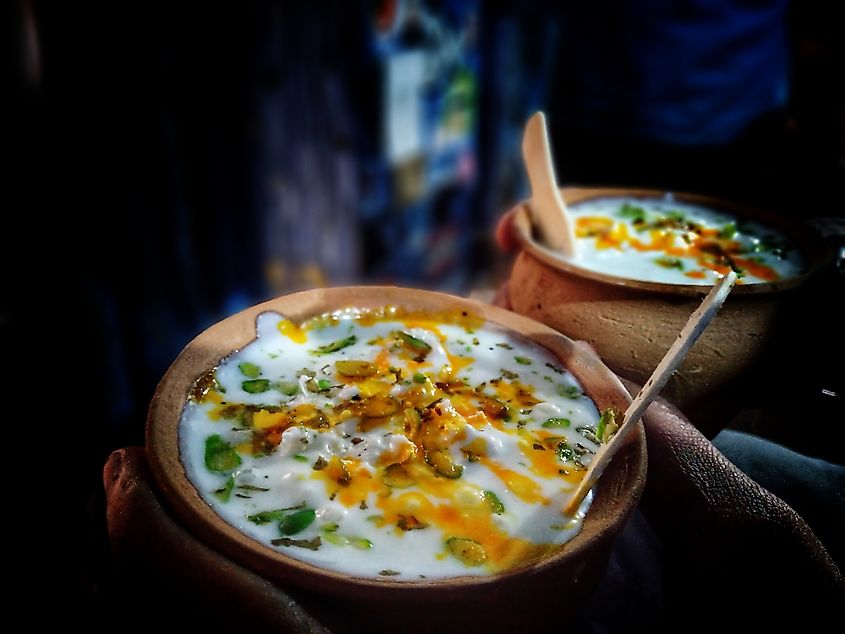
Varanasi is often referred to as the ‘Spiritual Capital of India’. Currently, the city houses around 3,000 temples and 84 riverfront ghats. Some of the major attractions of Varanasi have been discussed in this article.
Kashi Vishwanath Temple
This most famous Hindu temple is located on the western banks of the Ganges in the Vishwanath Gali of the city of Varanasi. The Temple is dedicated to Lord Shiva and houses the most revered jyotirlinga. The temple attracts millions of pilgrims every year from across the country. The Annapurna Temple located near the Kashi Vishwanath Temple is dedicated to Devi Annapoorna – the Goddess of Food.
Ghats Of Varanasi
As mentioned earlier, there are about 84 riverfront ghats in the city. These ghats cover a total length of about 6.8km along the banks of the River Ganges from its confluence with the Assi stream in the south to its confluence with the Varuna River in the north. The ghats are mostly used for bathing in the holy Ganges, for offering prayers, or for the cremation of dead bodies. Some of the famous ghats of Varanasi include the Dashashwamedh Ghat, the Manikarnika Ghat, the Jain Ghat, the Harishchandra Ghat, the Panchganga Ghat, etc.
The Dashashwamedh Ghat
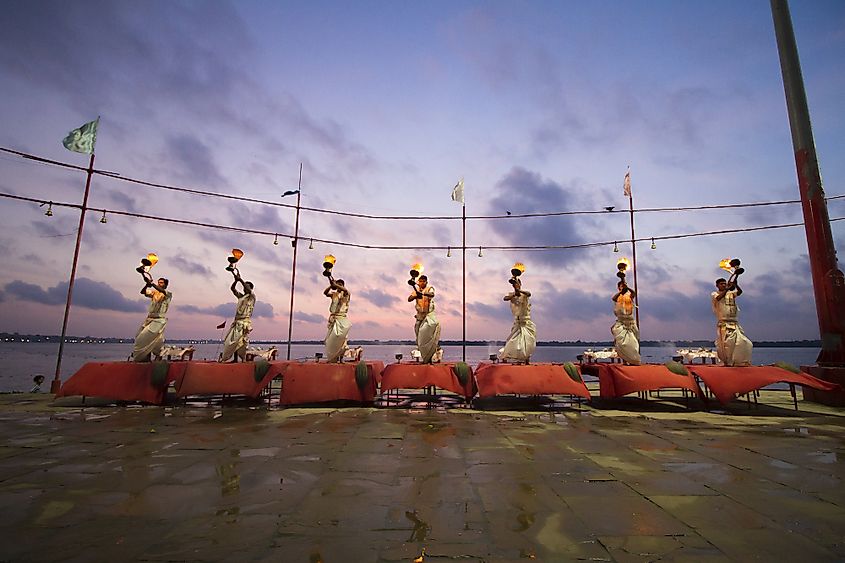
The Dashashwamedh Ghat is considered to be the oldest and principal ghat of Varanasi. The Ghat is believed to have been created by Brahma to welcome Shiva. Brahma also performed the Dasa-Ashwamedha yajna and sacrificed ten horses. Special aartis are held here every Tuesday and during religious festivals. The Manikarnika Ghat located near the Kashi Vishwanath Temple is revered as a Shakti Peetha as it is believed to be the site where Devi Sati’s earrings fell. The Ghat is also used for cremations. The Jain Ghat is revered as the birthplace of the 7th and the 23rd Jain Tirthankaras. Three Jain temples are located here. The tourists visiting these ghats can experience and witness the Hindu religious rituals from a close distance. The spiritual experience makes the Ghats of Varanasi a revered place to visit.
Ramnagar Fort
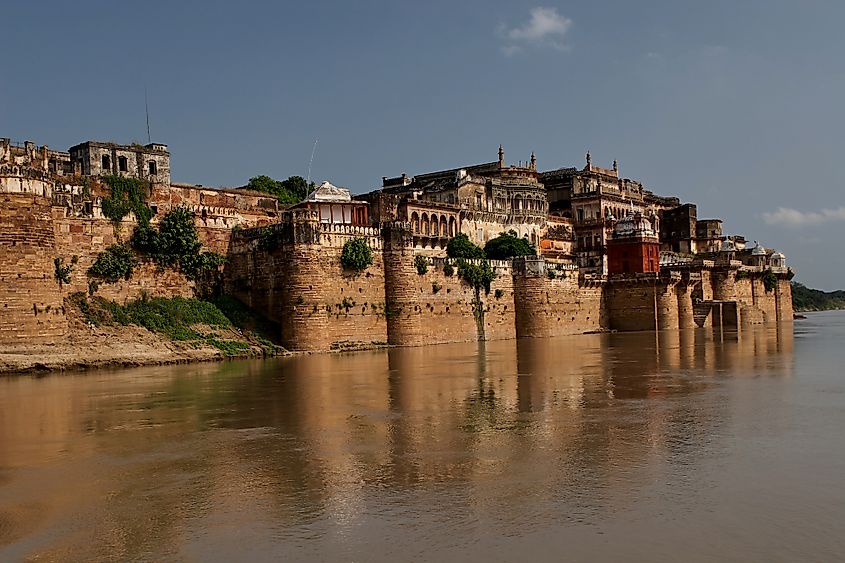
Located on the eastern banks of the Ganges River is the Ramnagar Fort, which was built in 1750 by the Kashi Naresh – Raja Balwant Singh. The fort was built with chunar sandstone and follows the Mughal style of architecture featuring scenic pavilions, carved balconies, and open courtyards.
Banaras Hindu University
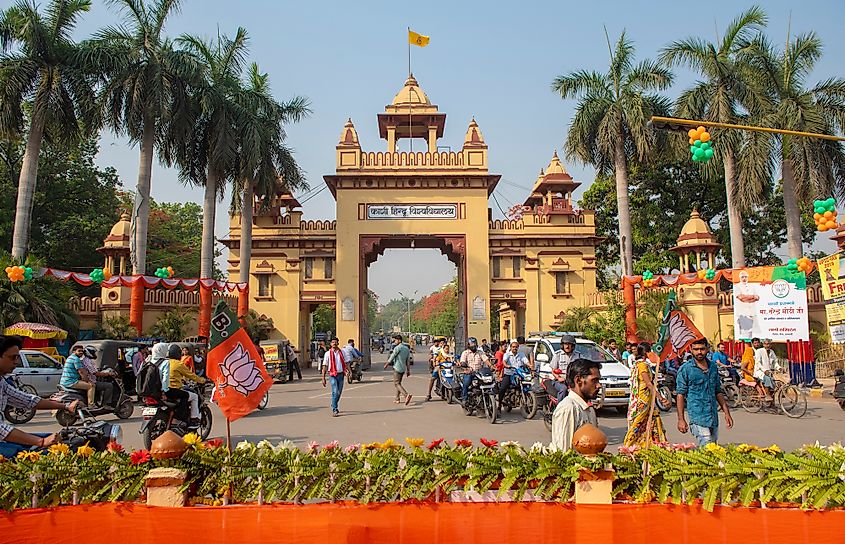
Varanasi has been revered as a center for learning through the ages. On February 4, 1916, the Banaras Hindu University was jointly established by Madan Mohan Malviya, Maharaja of Darbhanga, Maharaja of Banaras, Rameshwar Singh, Sunder Lal, and Annie Besant. It is considered Asia’s largest residential university.


 Users Today : 219
Users Today : 219 Total views : 463435
Total views : 463435